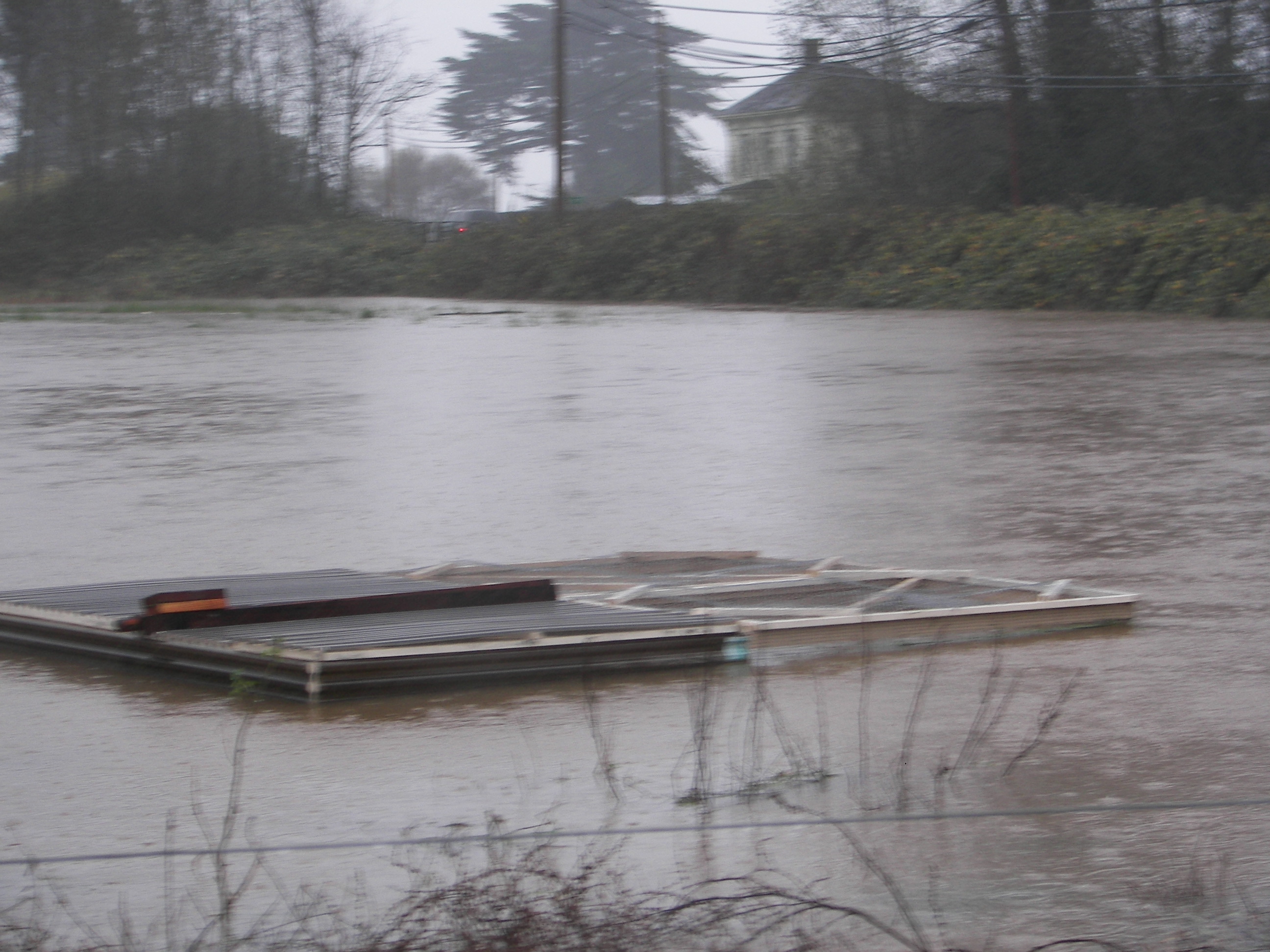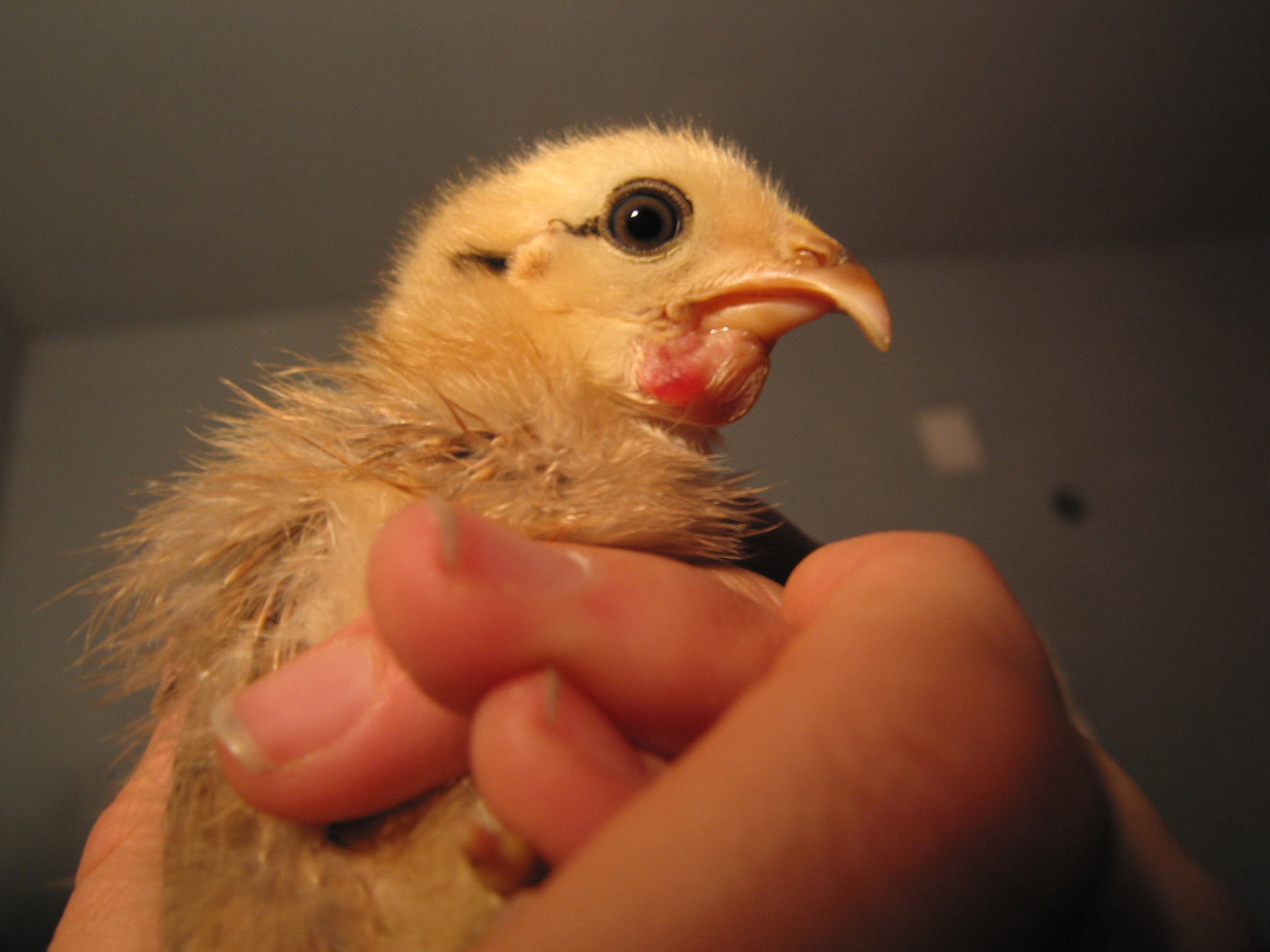
Trials and Tribulations
What a long and steep learning curve it had been. We did extremely well in the first few weeks of raising the chicks: our mortality was low (about 6%), the chicks were cute as could be, and we were well prepared to take care of the little fluff balls. From there it only got more difficult.

Our beloved, malformed, deceased chick "Gonzo"
Everything takes longer than expected: The hoop house and the chicken tractor were both ready for occupancy later than we hoped. We had hoped to get the chicks on pasture by the third week but didnít finish the HH until the 5th week. When we first tried the fencing out the chicks just walked right through the netting which is specifically sold for poultry. The manufacturer failed to mention that it was only appropriate for birds that were nearly full grown.
The CT wasnít finished until around the 9th week. I had expected to gather the materials over the course of two weeks and then build the whole thing in 2-3 days. This was extreme misjudgment: just finding materials required hours on the phone. I called all over the nation looking for aluminum roofing since that was recommended, and in the end had to settle on plastic. The aluminum was about 5 times more expensive and no one sold it locally. I found one source of 100% post-consumer recycled plastic roofing but it was also prohibitively expensive and not guaranteed to last any longer than the cheaper plastic roofing. It also needed to be shipped further than the local source of plastic roofing.
Building the CT was the first large carpentry project I have ever undertaken. In the beginning I was surprised at how light the structure was and pleased with how easy it was going to be to move. However, as the structure evolved more and more lumber was added and the thing became depressingly heavy. In the process I learned a lot about building and definitely will make changes to the next CT. Construction took about 4 weeks.
Our Primary Challenges:
● Our whole production model is based on mobility to keep the animals and land healthy. However, providing shelter and while keeping predators out makes it difficult to keep the weight of the structures manageable. When we are unable to move the shelter for a day or two due to lack of human or truck power, our pasture becomes overgrazed.
● Feed costs are high because we believe so strongly in organic farming. Chickens tend to waste a lot of feed by scratching and flinging food out of the feeders. We havenít figured out how to stop this when theyíre chicks, but we did redesign our bucket feeders to have a deeper tray with a shallower depth of food, which has reduced food waste by 90%.
● Predators are a huge concern because a lot of money goes into each bird before she begins to lay eggs and money starts to come back. Chickens donít start laying until they are about 6 months old and only lay prolifically for about 2 years. This means we must feed them for a long time before we get a return. If we lose a layer after the first few months we lose a lot more than if we lose a meat bird which only costs money for about 2-3 months before butchering. We have lost at least 16 birds to predators. We think both hawks and weasels have been the culprits.
● Our land is on a flood plain. This is wonderful for summer pasture because the water table is so high that the pasture stays green all summer without irrigation. However, this also means that numerous times during the winter the lower pastures flood. We were well aware that this would eventually happen so we kept a close eye on the creek. One evening we checked the creek level before a night of expected rain and it was at least 3 feet below the bank. The next morning we got a call from a neighbor that the creek was flooding and our chickens were in trouble. We rushed out and the 2í tall CT was under water with all 13 chickens drowned. The HH had a creek running under it, making us very thankful for the new wire floor which kept the birds safely out of the water. The world was different over night.
We tried moving the HH to higher ground but lost a wheel and only managed to get onto a small knoll above the flood waters. The HH is safe from high water now but the small area is insufficient for the months of winter. If we stay on the knoll for that long we will make a disgusting mess of it. If it were even possible to move our HH through the soft lands to an elevated pasture in the back of the property we would have a new set of problems transporting the food such a long distance from the brooder where it stays dry. As of December 10th, we have moved the hoop house to the back pasture and are trying to keep them at least through the winter.